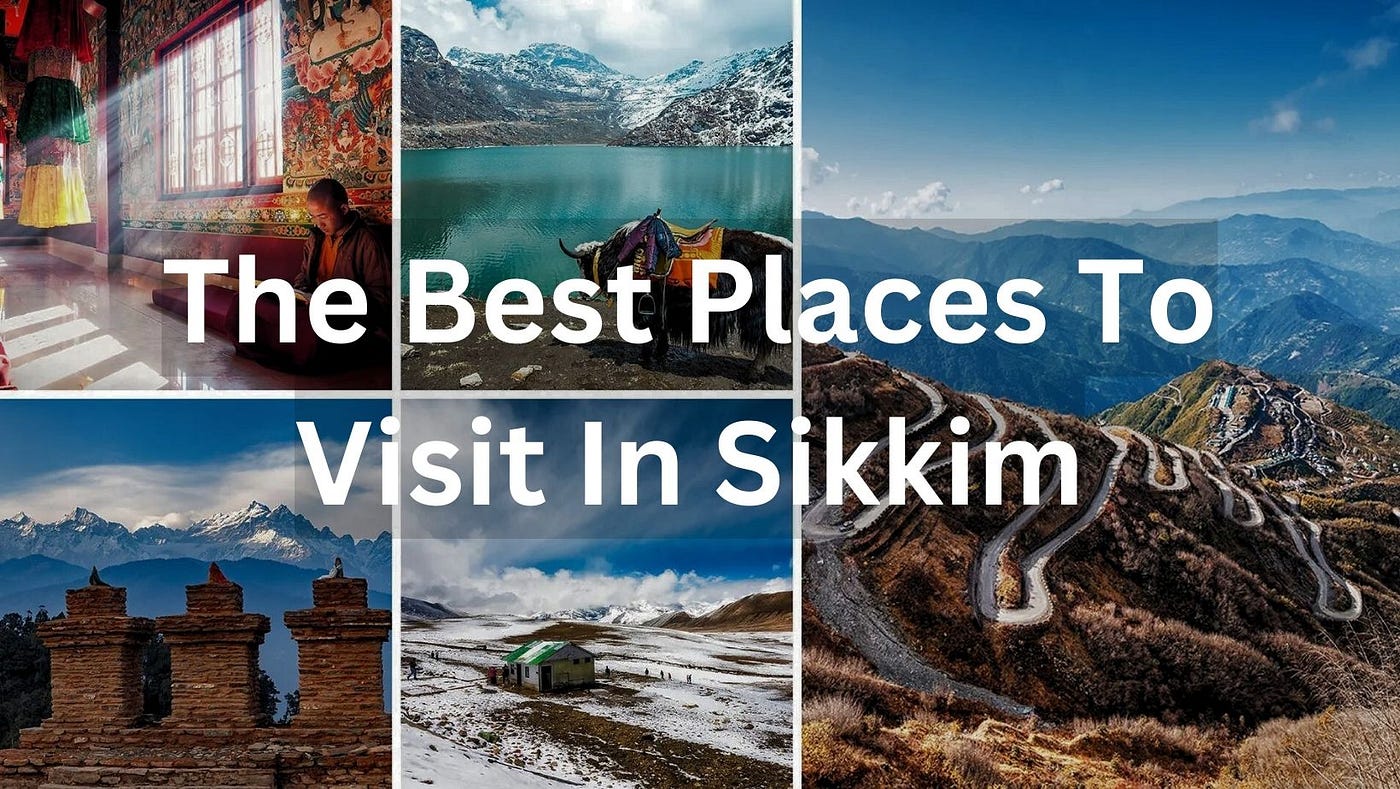“Lost in the vibrant streets of Gangtok, where every corner whispers tales of culture and charm. #GangtokDiaries #SikkimAdventures”
Embark on a journey to Sikkim, the top 10 tourist places in Sikkim a hidden gem in the northeastern part of India. Among the numerous breathtaking destinations, three jewels stand out – Gangtok, Nathula Pass, and Tsomgo Lake. Get ready to be captivated by the pristine beauty of these places.
Gangtok, the enchanting capital, welcomes you with its blend of cultural richness and natural splendor. Immerse yourself in the tranquility of monasteries like Enchey and Rumtek. The bustling markets and the Namgyal Institute of Tibetology add a vibrant touch to the city.
Nathula Pass, a high-altitude marvel, beckons adventure seekers. Marvel at the jaw-dropping vistas of the Himalayas, an experience that will stay etched in your memory. A visit to Tsomgo Lake, with its shimmering waters against a mountainous backdrop, is like stepping into a dream.
Picture yourself in the serene Yumthang Valley, a paradise for nature enthusiasts. Surrounded by meadows and hot springs, it’s a haven of tranquility. Pelling, with its panoramic views and ancient monasteries, ignites the desire to explore the cultural and natural wonders of Sikkim.
Lachung and Lachen, quaint mountain villages, offer a retreat from the mundane. Gurudongmar Lake, nestled at an extraordinary altitude, stirs a desire to witness the pristine beauty of one of the highest lakes in the world.
Pack your bags and set out on an unforgettable adventure. Discover the charm of Ravangla, with its Buddha Park and panoramic views, or explore the spiritual aura of Namchi with its Char Dham pilgrimage site. Consider the road less traveled to Zuluk, a destination with winding roads and breathtaking viewpoints.
Sikkim awaits, promising a tapestry of experiences. Plan your journey, obtain the necessary permits, and embrace the allure of this Himalayan wonderland. Your adventure in Sikkim begins with a simple step—take it!
Sikkim, a beautiful state in northeastern India, is known for its stunning landscapes, rich biodiversity, and vibrant culture.
Here are the top 10 tourist places in Sikkim:
1. Gangtok: (for the stunning mountain views)
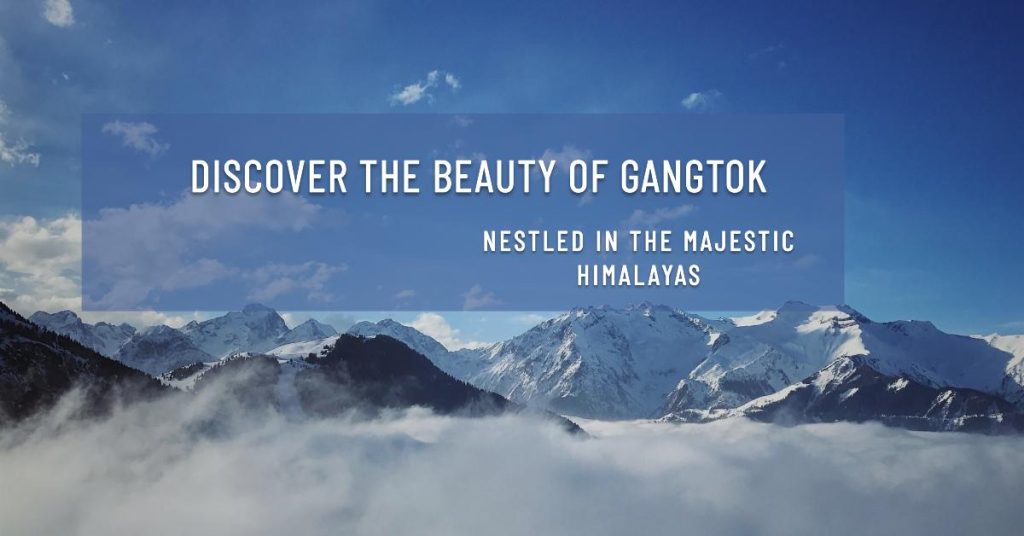
- The capital city of Sikkim, Gangtok is known for its picturesque landscapes, monasteries, and vibrant markets. Visit the Enchey Monastery, Rumtek Monastery, and the Namgyal Institute of Tibetology.
- Scenic Beauty:
- Gangtok is nestled in the Eastern Himalayan range, offering stunning views of snow-capped mountains, lush valleys, and serene landscapes.
- Cultural Diversity:
- The city is a melting pot of cultures with influences from Tibet, Nepal, and the indigenous Sikkimese people, creating a unique and vibrant cultural tapestry.
- Enchey Monastery:
- One of the important monasteries in Gangtok, Enchey Monastery is perched on a hilltop and provides a peaceful retreat. The monastery hosts the annual Cham Dance Festival.
- Rumtek Monastery:
- A significant Tibetan Buddhist monastery, Rumtek is known for its intricate architecture and religious importance. It’s the largest monastery in Sikkim.
- Namgyal Institute of Tibetology:
- This institute is a treasure trove of Tibetan culture and Buddhism. It houses a vast collection of artifacts, manuscripts, and religious artworks.
- MG Marg:
- The bustling and pedestrian-only MG Marg is the heart of Gangtok, lined with shops, cafes, and restaurants. It’s a great place to experience local cuisine and shop for souvenirs.
- Tashi Viewpoint:
- Tashi Viewpoint offers panoramic views of the Kanchenjunga mountain range. It’s an ideal spot to witness the sunrise and capture breathtaking Himalayan landscapes.
- Do Drul Chorten Stupa:
- A revered stupa in Gangtok, Do Drul Chorten is surrounded by 108 prayer wheels. It’s a peaceful place for meditation and reflection.
- Flower Exhibition Centre:
- Gangtok hosts an annual flower show, and the Flower Exhibition Centre showcases a vibrant display of Sikkim’s floral diversity. It’s a treat for nature lovers.
- Adventure Hub:
- Gangtok serves as a base for various adventure activities, including trekking, river rafting, and paragliding. The city caters to both nature enthusiasts and adventure seekers.
- Tsuklakhang Royal Chapel:
- Located within the Royal Palace complex, this chapel is a place of worship for the royal family and offers a glimpse into Sikkim’s royal history.
- Ganesh Tok and Hanuman Tok:
- These are two hilltop temples offering stunning views of the surrounding mountains and the city. They provide a tranquil setting for spiritual contemplation.
2. Nathula Pass: (for the high-altitude border crossing)
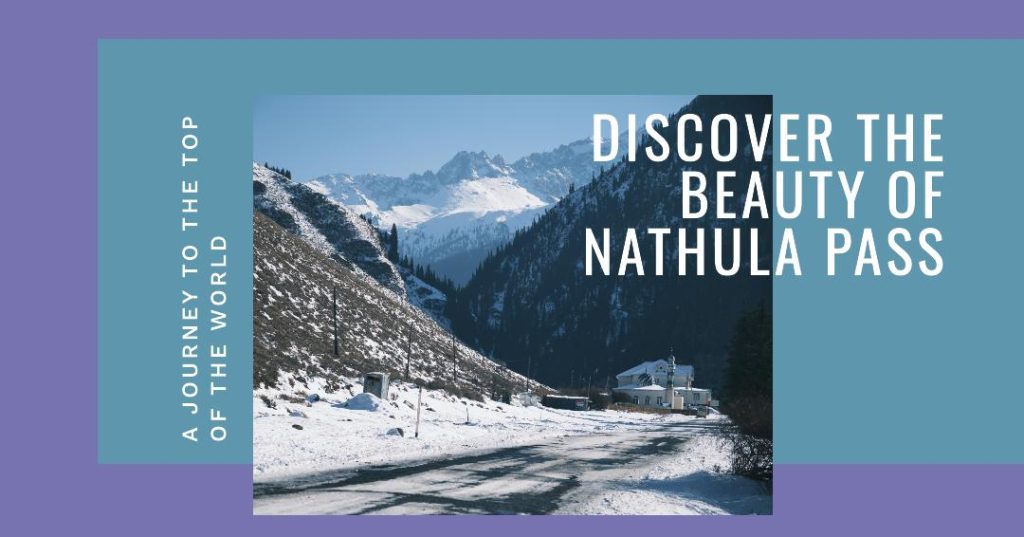
“Nathula Pass – where the air is thin, and the views are breathtaking. Standing at the Indo-China border, feeling on top of the world! #Nathula #SikkimTravel”
- Nathula Pass, situated in the northeastern state of Sikkim, is a high-altitude mountain pass near the Indo-China border. Here are the most important points about Nathula Pass:
- Altitude:
- Nathula Pass is situated at an altitude of approximately 14,140 feet (4,300 meters) above sea level, making it one of the highest motorable mountain passes in the world.
- Indo-China Border:
- It serves as a strategic border crossing between India and China on the ancient Silk Route. The border is marked by the Line of Actual Control (LAC), and the pass was part of the historic Silk Road trade route.
- Permit Requirement:
- Visitors need a special permit issued by the Indian government to visit Nathula Pass due to its proximity to the international border. Permits are typically obtained in Gangtok.
- Scenic Beauty:
- Nathula offers breathtaking panoramic views of the snow-capped Himalayan peaks, including the majestic Kanchenjunga. The landscape is characterized by rugged mountains and pristine snowfields.
- Tsomgo Lake:
- En route to Nathula, visitors often pass by Tsomgo Lake, a glacial lake at an altitude of 12,313 feet. The lake freezes during the winter, creating a picturesque scene.
- Yak Rides:
- Tourists can experience the unique thrill of riding yaks in the snow at Nathula. Yak rides are a popular activity, providing an adventurous way to explore the stunning surroundings.
- Military Importance:
- Nathula has historical and strategic significance, having been a major corridor for trade between India and Tibet. It was also the site of the 1962 Sino-Indian War.
- Border Personnel Meeting (BPM):
- The BPM takes place at Nathula, where Indian and Chinese military personnel meet for ceremonial interactions. This meeting is held at the Nathula border post called the “Nathula Conference Hall.”
- Weather Conditions:
- Due to its high altitude, Nathula experiences harsh weather conditions, with heavy snowfall during winters. The pass is usually open for tourists from May to October, and the weather can be unpredictable.
- Silk Route Connection:
- Nathula Pass is part of the historic Silk Route, an ancient trade route that connected India with Tibet and China. The route facilitated the exchange of goods, culture, and ideas.
3. Tsomgo Lake (Changu Lake): (for the vibrant turquoise water and prayer flags)

“Tsomgo Lake, a sparkling jewel nestled in the Himalayas. Frozen in winter, serene in summer – nature’s masterpiece at its best! #TsomgoLake #SikkimBeauty”
- Situated at an altitude of 12,313 feet, Tsomgo Lake is a glacial lake surrounded by steep mountains. The lake freezes during the winter, creating a mesmerizing sight.
- Altitude:
- Tsomgo Lake is situated at an altitude of 12,313 feet (3,753 meters) above sea level, making it one of the highest lakes in India. It’s surrounded by steep mountains, adding to its picturesque setting.
- Glacial Origin:
- The lake is primarily fed by the melting snow from the surrounding mountains, making it a glacial lake. It remains frozen during the winter months, creating a stunning icy landscape.
- Proximity to Nathula Pass:
- Tsomgo Lake is located en route to Nathula Pass, a popular destination for tourists in Sikkim. The lake is approximately 40 kilometers from Gangtok, the capital of Sikkim.
- Sacred Significance:
- For the local Sikkimese people, Tsomgo Lake holds spiritual significance. It is considered sacred and is often visited by pilgrims during the Hindu festival of Guru Purnima.
- Flora and Fauna:
- The region around Tsomgo Lake is known for its diverse flora and fauna. The area is home to various species of migratory birds, including the Brahmini ducks, and the surrounding vegetation adds to the natural beauty.
- Yak Rides:
- Tourists visiting Tsomgo Lake have the opportunity to experience yak rides around the lake. Yaks, adorned with colorful accessories, offer a unique and traditional mode of transportation.
- Photography Paradise:
- The pristine beauty of Tsomgo Lake, with its crystal-clear waters reflecting the surrounding mountains, makes it a paradise for photographers. The changing hues of the lake and the scenic landscapes are captivating.
- Weather Conditions:
- Due to its high altitude, the weather around Tsomgo Lake can be chilly, even in the summer. Visitors are advised to dress warmly and be prepared for sudden weather changes.
- Limited Accessibility:
- Tsomgo Lake is generally accessible during the tourist season, which is from May to October. However, the road leading to the lake can be challenging during the winter months due to heavy snowfall.
- Conservation Measures:
- The Sikkim government has implemented measures to conserve the ecological balance around Tsomgo Lake. Visitors are encouraged to respect the natural surroundings and wildlife in the area.
4. Yumthang Valley: (for the valley bursting with colorful blooms)
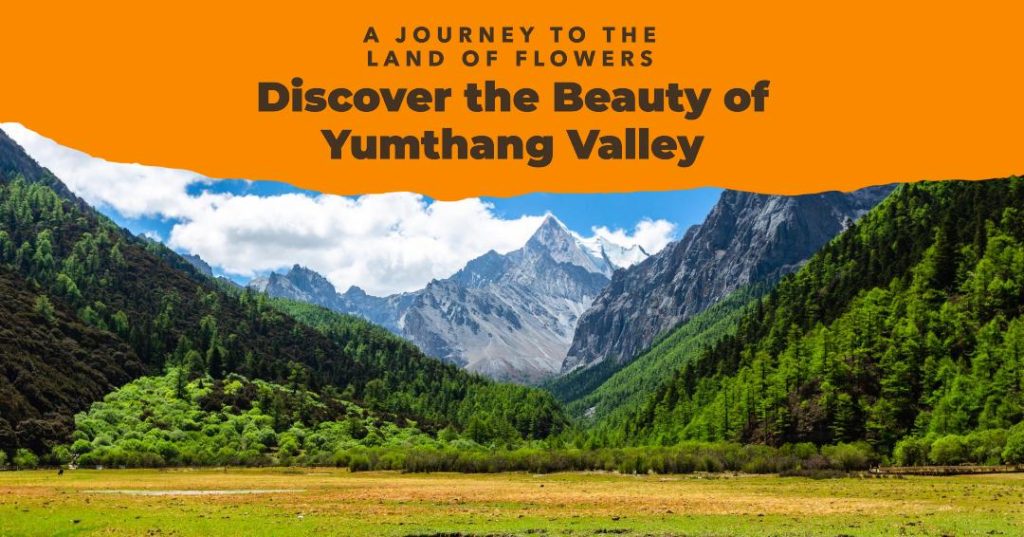
- Known as the “Valley of Flowers,” Yumthang is famous for its stunning meadows, hot springs, and the Shingba Rhododendron Sanctuary. It’s a great destination for nature lovers.
“Yumthang Valley, where every step is a dance with nature. Meadows, hot springs, and the colorful Shingba Rhododendron Sanctuary – a floral symphony! #YumthangValley #SikkimFlowers”
- Natural Beauty:
- Yumthang Valley is renowned for its breathtaking natural beauty, featuring lush green meadows, vibrant alpine flowers, and a backdrop of snow-capped mountains.
- Altitude:
- Situated at an elevation of around 11,693 feet (3,565 meters), Yumthang Valley is surrounded by towering peaks, making it a high-altitude destination.
- Rhododendron Sanctuary:
- The valley is home to the Shingba Rhododendron Sanctuary, which bursts into a riot of colors during the spring season. Different species of rhododendrons, including the state flower of Sikkim, bloom here.
- Hot Springs:
- Yumthang is known for its hot springs, which are believed to have therapeutic properties. The water is rich in minerals and is a popular stop for those seeking relaxation and rejuvenation.
- River Teesta:
- The Yumthang Chu River, a tributary of the Teesta River, flows through the valley, enhancing the scenic charm of the region. The riverbank is an ideal spot for picnics.
- Summer Pastures:
- During the summer months, the valley transforms into a vibrant carpet of flowers and serves as a grazing ground for yaks, adding to the pastoral charm of the landscape.
- Zero Point:
- Zero Point, or Yumesamdong, is an extension of Yumthang Valley and marks the end of the tree line. It offers panoramic views of snow-covered peaks and is accessible by special permits.
- Accessibility:
- Yumthang Valley is accessible by road from Gangtok, the capital of Sikkim. The journey offers mesmerizing views, including a stop at the popular Seven Sisters Waterfall.
- Limited Accessibility in Winter:
- The valley receives heavy snowfall during winter, making it inaccessible for a few months. It is typically open to tourists from late March to early June and from September to mid-November.
- Cultural Events:
- Yumthang Valley hosts various cultural events, and local festivals are celebrated with enthusiasm. Visitors during these times can experience the unique blend of nature and culture.
- Wildlife:
- The valley is home to various species of wildlife, including the red panda and the Himalayan blue sheep. Birdwatchers can spot a variety of avian species in the region.
- Trekking Opportunities:
- Yumthang Valley serves as a starting point for treks to higher altitudes and neighboring areas. Trekkers can explore the pristine landscapes and diverse flora along the trails.
5. Pelling: (for the historical and architectural significance)
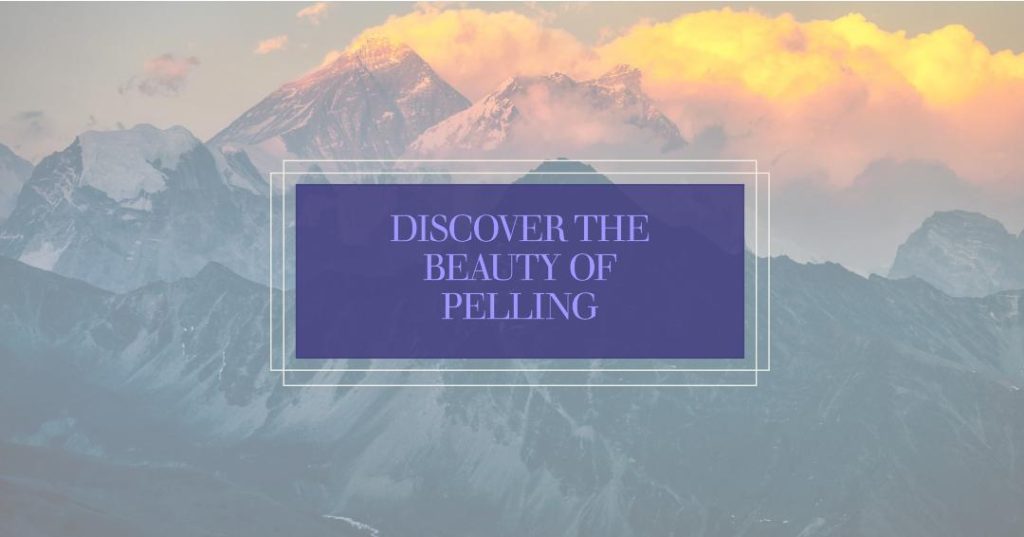
- Pelling offers spectacular views of the Kanchenjunga mountain range. Key attractions include the Pemayangtse Monastery, Sangachoeling Monastery, and the Rabdentse Ruins.
“Pelling, a canvas of Kanchenjunga views and ancient monasteries. Every sunrise and sunset here is a masterpiece painted by the mountains! #PellingMagic #SikkimVibes”
- Kanchenjunga Views:
- Pelling is celebrated for its breathtaking views of the Kanchenjunga, the third-highest mountain in the world. The sight of the snow-capped peaks against the blue sky is mesmerizing.
- Pemayangtse Monastery:
- The town is home to the Pemayangtse Monastery, one of the oldest and most important monasteries in Sikkim. It boasts intricate woodwork and religious artifacts, and it offers panoramic views of the surrounding hills.
- Sangachoeling Monastery:
- Another significant monastery in Pelling is the Sangachoeling Monastery, perched on a ridge and offering stunning views of the mountains. It is one of the oldest monasteries in Sikkim.
- Rabdentse Ruins:
- Pelling features the archaeological site of Rabdentse, the ancient capital of the Kingdom of Sikkim. The ruins offer a glimpse into the region’s history and provide a peaceful atmosphere for exploration.
- Rimbi Waterfall:
- Rimbi Waterfall is a picturesque attraction near Pelling. Visitors can enjoy the sight and sound of cascading water in a lush green setting.
- Khecheopalri Lake:
- A sacred and serene lake, Khecheopalri is considered holy by both Buddhists and Hindus. Surrounded by dense forests, it’s known for its clear water and tranquil atmosphere.
- Changey Waterfall:
- Changey Waterfall, located en route to Pelling, is a captivating natural attraction surrounded by lush vegetation. It’s an ideal spot for nature lovers and photography enthusiasts.
- Nature Walks and Treks:
- Pelling offers opportunities for nature walks and treks, allowing visitors to explore the rich biodiversity and scenic landscapes of the region.
- Singshore Bridge:
- Singshore Bridge near Pelling is one of the highest suspension bridges in Asia. It offers panoramic views of the lush greenery and deep valleys beneath.
- Tashiding Monastery:
- Situated on a hilltop, Tashiding Monastery is a sacred site with a peaceful ambiance. Pilgrims and visitors come here to experience spirituality and enjoy the surrounding landscapes.
- Yuksom:
- Yuksom, a historic town near Pelling, is where the first Chogyal (king) of Sikkim was consecrated. It serves as a gateway to many trekking trails and historical sites.
- Cultural Events:
- Pelling hosts various cultural events and festivals, providing an opportunity for visitors to witness and participate in the vibrant traditions of the region.
6. Lachung and Lachen:
- These are charming mountain villages known for their natural beauty. Lachung is the base for exploring Yumthang Valley, while Lachen serves as a base for the Gurudongmar Lake.
“Lachung and Lachen, two mountain hamlets that stole my heart. Nature’s serenity is at its best, offering a gateway to the mesmerizing Gurudongmar Lake. #LachungLachen #SikkimEscape”
Lachung:
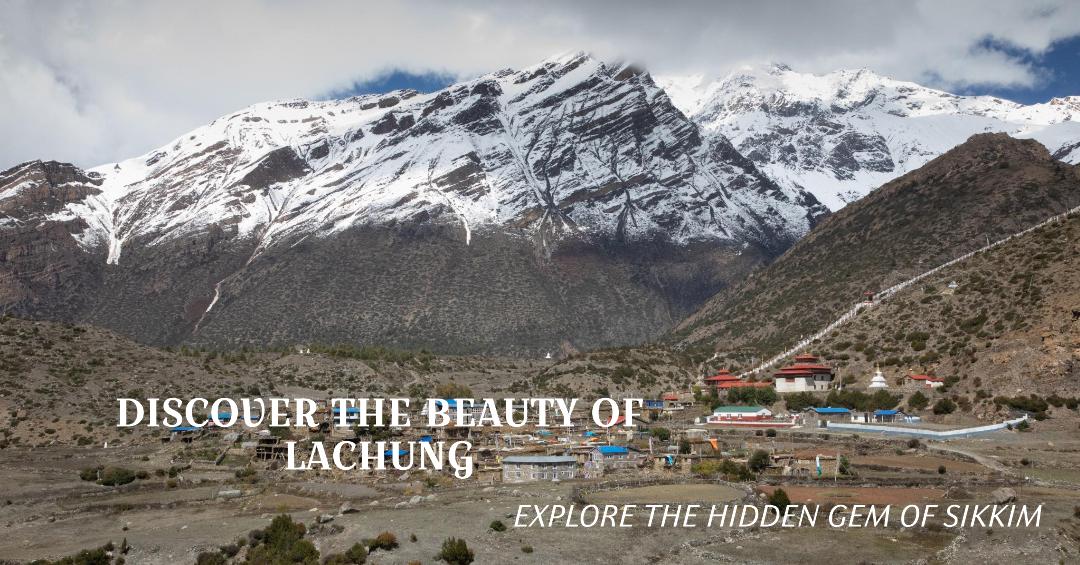
- Location:
- Lachung is situated in North Sikkim, at an elevation of approximately 8,610 feet (2,624 meters) above sea level.
- Yumthang Valley:
- Lachung serves as the gateway to the renowned Yumthang Valley, often referred to as the “Valley of Flowers.” The valley is famous for its meadows, hot springs, and vibrant blooms.
- Zero Point:
- Zero Point, or Yumesamdong, is an extension of Yumthang Valley and is known for its breathtaking views of snow-covered peaks. It is accessible from Lachung with a special permit.
- Bhim Nala Waterfall:
- Bhim Nala Waterfall, located on the way to Yumthang, is a majestic waterfall surrounded by lush greenery, offering a refreshing stop for visitors.
- Lachung Monastery:
- The Lachung Monastery, also known as the Lachung Gompa, is a Buddhist monastery that provides insight into the local culture and spirituality.
- Thangu and Chopta Valley:
- Lachung is a base for exploring Thangu and Chopta Valley, known for their alpine meadows and pristine landscapes. Thangu is a high-altitude village and a popular trekking destination.
- Breathtaking Landscapes:
- The entire region around Lachung is characterized by stunning landscapes, with snow-capped peaks, lush forests, and flowing rivers creating a picturesque setting.
Lachen:
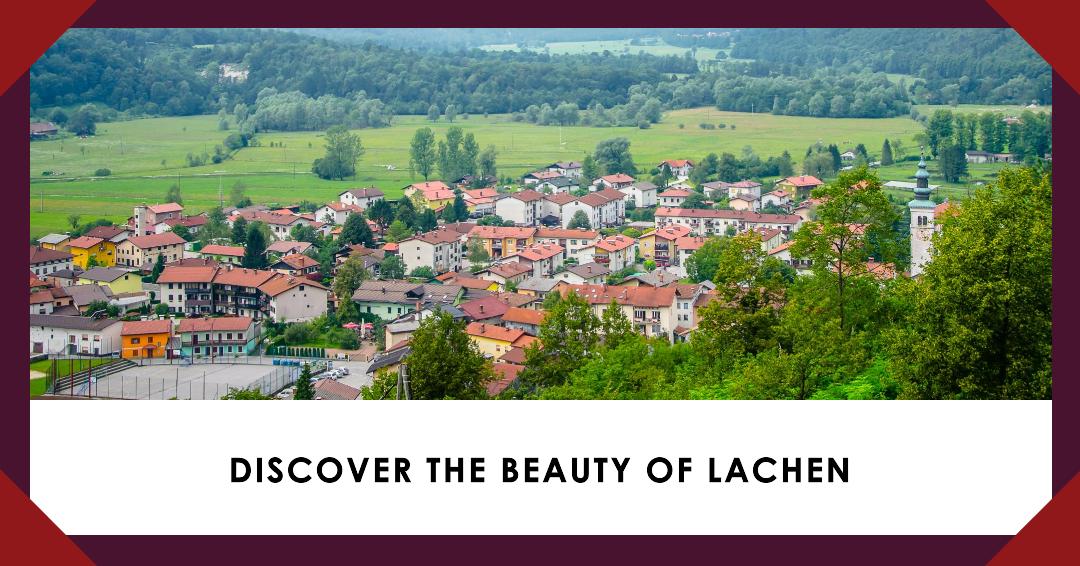
- Location:
- Lachen is located at an elevation of around 9,000 feet (2,740 meters) above sea level in North Sikkim.
- Gurudongmar Lake:
- Lachen is the starting point for the journey to Gurudongmar Lake, one of the highest lakes in the world. The lake is sacred and offers panoramic views of the surrounding mountains.
- Chopta Valley:
- Lachen is also a gateway to Chopta Valley, another beautiful destination with alpine meadows, scenic landscapes, and the Thangu Chu River flowing through.
- Lachen Monastery:
- The Lachen Monastery, or Ngodub Choling Monastery, is a significant religious site that reflects the Buddhist culture of the region.
- Thangu:
- Thangu, near Lachen, is a high-altitude village that serves as a base for treks to higher altitudes. It offers a glimpse into the traditional lifestyle of the mountain communities.
- Gurudongmar Wildlife Sanctuary:
- The area around Lachen is part of the Gurudongmar Wildlife Sanctuary, home to a variety of flora and fauna. It is essential for the conservation of biodiversity in the region.
- Trekking Hub:
- Lachen is a starting point for various treks, attracting adventure enthusiasts looking to explore the pristine Himalayan landscapes.
- Remote and Tranquil:
- Both Lachung and Lachen offer a serene and remote atmosphere, providing a retreat for those seeking peace and tranquility away from the hustle and bustle of city life.
7. Ravangla: (for the peaceful river flowing through the mountains)
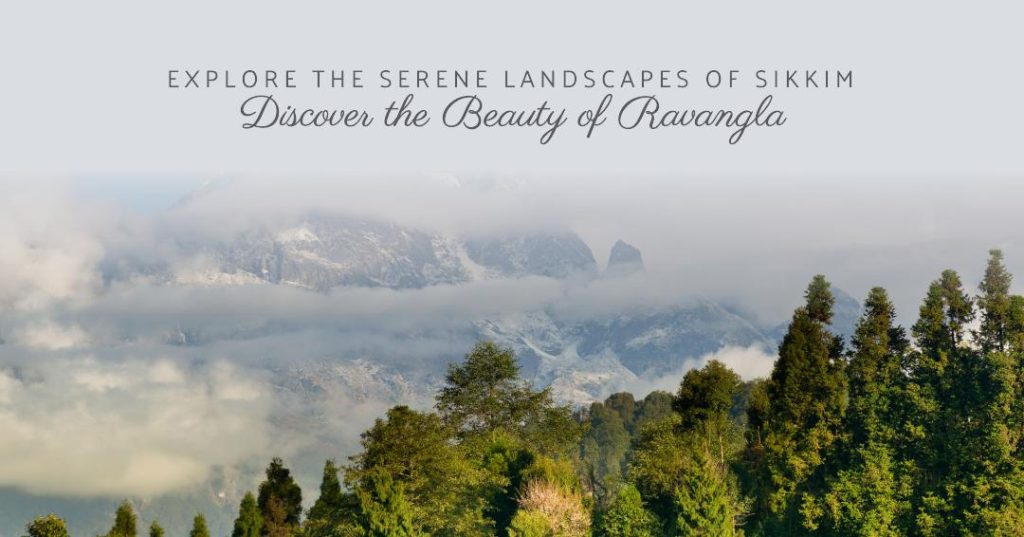
- Ravangla is known for its serene environment and offers panoramic views of the Himalayas. Visit the Buddha Park, Ralong Monastery, and Tathagata Tsal (Buddha Park).
“Ravangla, where the Buddha Park and panoramic views create a haven of peace. A perfect retreat for the soul-searchers! #RavanglaBliss #SikkimSerenity”
- Location:
- Ravangla is located in the southern part of Sikkim, nestled at an altitude of approximately 7,000 feet (2,134 meters) above sea level.
- Buddha Park (Tathagata Tsal):
- The Buddha Park in Ravangla is home to a giant statue of Lord Buddha, surrounded by manicured gardens. The park offers stunning views of the surrounding hills and mountains.
- Ralong Monastery:
- Ralong Monastery, a key religious site in Ravangla, is known for its beautiful murals, ancient scriptures, and the annual Pang Lhabsol festival celebrated here.
- Ravangla Market:
- The local market in Ravangla is a vibrant hub where visitors can explore traditional Sikkimese handicrafts, artifacts, and local cuisine.
- Tathagata Tsal (Ravangla Buddha Park):
- The Tathagata Tsal not only features the giant Buddha statue but also provides a serene atmosphere for meditation and reflection amidst the stunning natural surroundings.
- Rayong Sunrise View Point:
- Rayong Sunrise View Point is a popular spot in Ravangla to witness breathtaking sunrises over the Kanchenjunga mountain range. The view is especially spectacular during clear mornings.
- Kewzing Village:
- Nearby Kewzing Village offers a chance to experience Sikkimese rural life. The village is known for its homestay accommodations, allowing visitors to immerse themselves in the local culture.
- Maenam Wildlife Sanctuary:
- The Maenam Wildlife Sanctuary, located near Ravangla, is home to diverse flora and fauna. It offers trekking trails and an opportunity to explore the rich biodiversity of the region.
- Bird Watching:
- Ravangla is a haven for bird watchers, with numerous species of birds found in the surrounding forests. The Maenam Wildlife Sanctuary is a particularly good spot for birding.
- Serene Environment:
- Ravangla is cherished for its tranquil and peaceful environment, making it an ideal destination for those seeking a retreat amidst nature.
- Temi Tea Garden:
- The Temi Tea Garden, one of the few tea estates in Sikkim, is located near Ravangla. Visitors can explore the tea gardens, witness the tea-making process, and enjoy panoramic views.
- Adventure Activities:
- Ravangla offers opportunities for adventure activities such as trekking and hiking, allowing visitors to explore the surrounding hills and forests.
- Cultural Events:
- Ravangla hosts various cultural events, including traditional festivals and celebrations, providing visitors with a glimpse into the local way of life.
8. Gurudongmar Lake: (for the second-highest lake in the world)
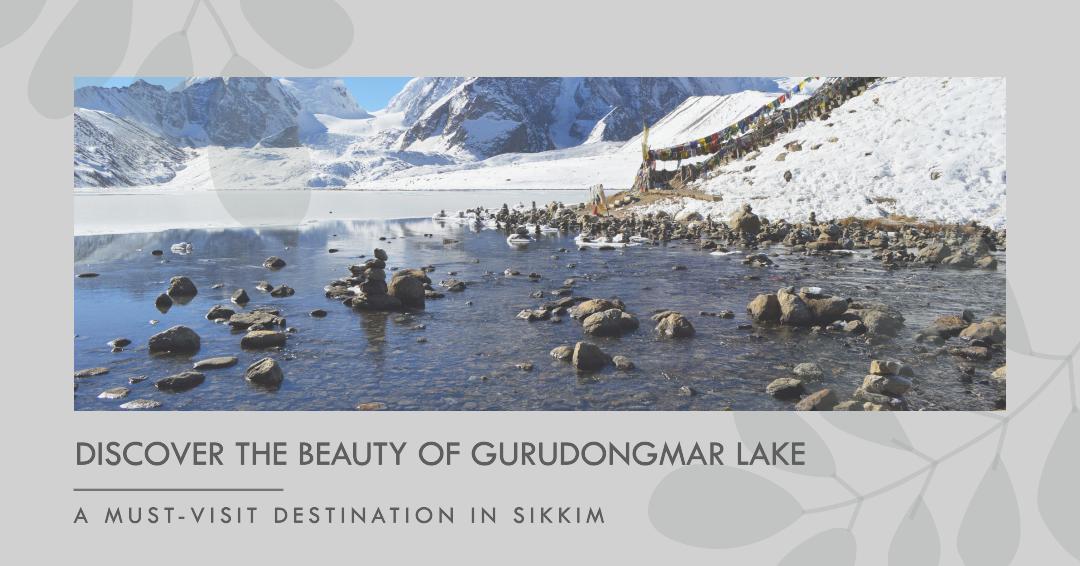
- Located at an altitude of 17,800 feet, Gurudongmar Lake is one of the highest lakes in the world. The pristine beauty and the surrounding landscapes are awe-inspiring.
“Sikkim, a symphony of beauty in every corner. From the cultural pulse of Gangtok to the heights of Gurudongmar Lake, this Himalayan haven has it all. #SikkimDiaries #TravelInspiration”
- Altitude:
- Gurudongmar Lake is located at an elevation of approximately 17,800 feet (5,430 meters), making it one of the highest lakes in the world.
- Location:
- It is situated in the northern part of Sikkim, near the Indo-China border, and is accessible from the village of Lachen.
- Religious Significance:
- Gurudongmar Lake holds great religious significance for both Buddhists and Sikhs. It is believed that Guru Nanak, the founder of Sikhism, visited the lake during his travels.
- Frozen Lake:
- Due to its high altitude, Gurudongmar Lake remains frozen during the winter months (from November to mid-May). The frozen lake is a captivating sight and a popular attraction.
- Crystal-Clear Water:
- In the summer months, when the lake thaws, it reveals crystal-clear blue waters. The lake is surrounded by snow-capped peaks, creating a stunning contrast.
- Panoramic Views:
- Gurudongmar Lake offers breathtaking panoramic views of the surrounding Himalayan mountains, including the Kanchenjunga range, making it a paradise for nature lovers and photographers.
- Wildlife Sanctuary:
- The region around Gurudongmar Lake falls under the Gurudongmar Wildlife Sanctuary, home to various species of flora and fauna adapted to the high-altitude environment.
- Accessibility:
- The lake is accessible by road from Lachen, but due to its high altitude, visitors may experience altitude sickness. Acclimatization is recommended before reaching Gurudongmar.
- Permit Requirements:
- Travelers need special permits from the Sikkim Tourism Department to visit Gurudongmar Lake due to its proximity to the sensitive international border.
- Thangu and Chopta Valley:
- Gurudongmar Lake is often visited in conjunction with trips to Thangu and Chopta Valley, offering more opportunities to explore the natural beauty of North Sikkim.
- Religious Celebrations:
- The lake is a site for religious celebrations, with devotees and tourists often participating in rituals and prayers. Pilgrims believe that the water of the lake has healing properties.
- Restricted Area:
- The lake is situated near the restricted area along the Indo-China border, and visitors are advised to follow guidelines and respect the local regulations for safety and security.
9. Namchi:
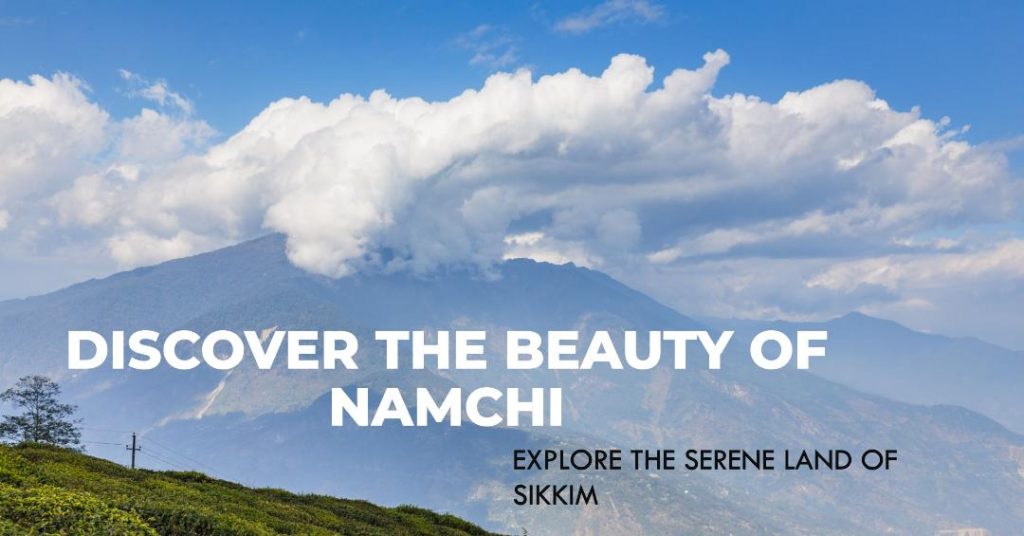
- Namchi is known for the Char Dham, a pilgrimage destination with replicas of four sacred Hindu shrines. The town also offers panoramic views of the surrounding mountains.
“Namchi – home to the divine Char Dham and views that touch the heavens. A pilgrimage for the soul and a feast for the eyes! #NamchiCharDham #SikkimSpiritual”
- Location:
- Namchi is located in the southern part of the Indian state of Sikkim, situated at an elevation of approximately 4,267 feet (1,301 meters) above sea level.
- Char Dham:
- Namchi is home to the Siddhesvara Dham, also known as Char Dham. It is a pilgrimage complex that replicates the four sacred Hindu shrines of Jagannath, Badrinath, Dwarka, and Rameswaram.
- Statue of Guru Padmasambhava:
- The town features a towering statue of Guru Padmasambhava, also known as Guru Rinpoche, a revered Buddhist saint who played a key role in spreading Buddhism in the Himalayan region.
- Samdruptse Hill:
- Samdruptse Hill, located near Namchi, is home to the Samdruptse Monastery and the impressive statue of Guru Padmasambhava. The hill offers panoramic views of the surrounding mountains and valleys.
- Tendong Hill:
- Tendong Hill, situated near Namchi, is a scenic viewpoint offering breathtaking vistas of the Eastern Himalayas. It is a popular spot for trekking and nature enthusiasts.
- Ngadak Monastery:
- Ngadak Monastery is an ancient monastery in Namchi, showcasing traditional Tibetan architecture and serving as a place for religious practices and cultural events.
- Rock Garden and Water Garden:
- Namchi boasts a beautifully landscaped Rock Garden and Water Garden, providing a serene environment for visitors to relax and enjoy the natural beauty.
- Serdup Choling Monastery:
- Serdup Choling Monastery is another significant Buddhist monastery in Namchi, reflecting the rich cultural and spiritual heritage of Sikkim.
- Helipad:
- Namchi features a helipad offering panoramic views of the surrounding landscapes. It is a popular spot for tourists and locals alike.
- Cultural Events:
- The town hosts various cultural events and festivals, allowing visitors to witness and participate in the vibrant traditions of Sikkim.
- Namchi Mahotsav:
- Namchi Mahotsav is an annual cultural festival that celebrates the rich cultural diversity of Sikkim. It features traditional music, dance, and local cuisine.
- Swiss Cottages:
- Namchi offers Swiss cottages for accommodation, providing a comfortable stay with beautiful views of the surrounding hills and mountains.
- Tea Gardens:
- The nearby tea gardens, such as Temi Tea Garden, provide an opportunity for visitors to explore the tea-making process and enjoy the scenic beauty of the plantations.
10. Zuluk: (for the unique and untouched village)
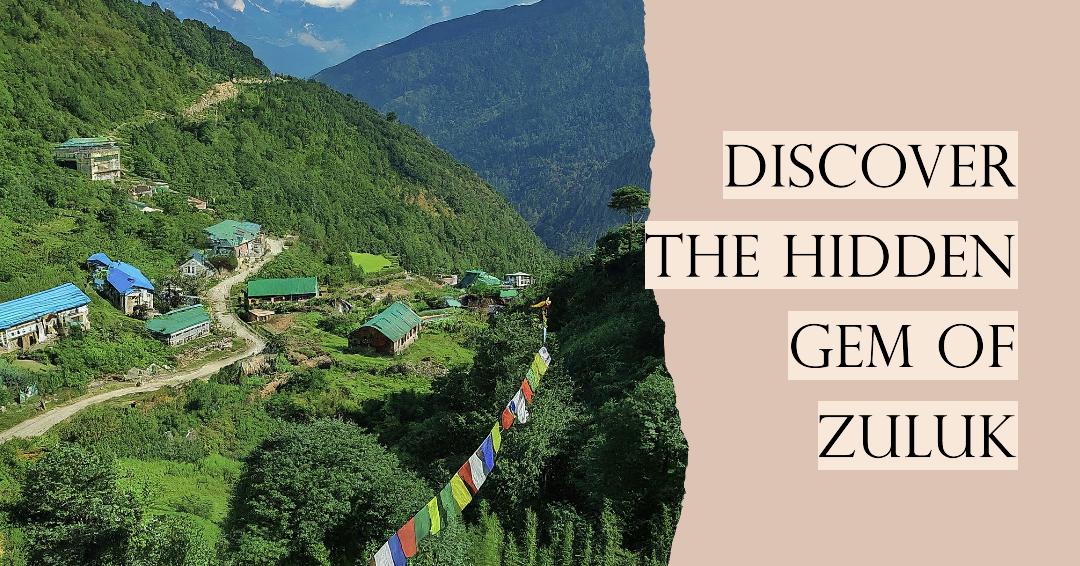
- Zuluk is a relatively offbeat destination known for its winding roads, hairpin bends, and the Thambi View Point, offering a stunning view of the Kanchenjunga range.
“Zuluk, a hidden treasure with winding roads and the Thambi View Point offering a mesmerizing glimpse of the Kanchenjunga range. Adventure awaits! #ZulukAdventure #SikkimHiddenGem”
- Location:
- Zuluk is situated in the eastern part of Sikkim, at an altitude of approximately 10,100 feet (3,080 meters) above sea level.
- Old Silk Route:
- Zuluk lies along the historic Old Silk Route, which was a crucial trade route connecting India with Tibet and China. The route offers stunning views of the Himalayas.
- Thambi Viewpoint:
- Thambi Viewpoint in Zuluk provides a breathtaking panoramic view of the winding roads and the surrounding mountains. It is a popular spot for photography and sightseeing.
- Gnathang Valley:
- Gnathang Valley, also known as Nathang Valley, is a picturesque destination near Zuluk known for its high-altitude landscapes, alpine meadows, and views of the Kanchenjunga range.
- Kupup Lake (Elephant Lake):
- Kupup Lake, often referred to as Elephant Lake due to its shape, is a high-altitude lake near Zuluk. It freezes during the winter, creating a stunning icy landscape.
- Tukla Valley:
- Tukla Valley, en route to Zuluk, is known for its scenic beauty and historical significance. The valley played a role in the events of the British expedition to Tibet.
- Zuluk Loop:
- Zuluk is famous for its 32 hairpin bends known as the Zuluk Loop. The drive through these winding roads offers an adventurous journey with stunning mountain views.
- Ganek Viewpoint:
- Ganek Viewpoint provides panoramic views of the sunrise over the Himalayas. It is a popular spot for tourists to witness the first light of the day.
- Baba Harbhajan Singh Mandir:
- The Baba Harbhajan Singh Mandir, dedicated to a revered Indian army soldier, is located near Zuluk. It is a place of pilgrimage and offers a peaceful ambiance.
- High-Altitude Experience:
- Zuluk is situated at a high altitude, and visitors are advised to acclimatize properly to avoid altitude-related issues. It provides a unique experience of being in the lap of the Himalayas.
- Flora and Fauna:
- The region around Zuluk is home to diverse flora and fauna adapted to the high-altitude environment. It is a paradise for nature enthusiasts and birdwatchers.
- Restricted Area:
- Parts of Zuluk and the surrounding areas fall under the restricted zone due to their proximity to the Indo-China border. Visitors are required to obtain permits for certain areas.
When visiting Sikkim, it’s important to check the local regulations and permits required, especially for areas near the international borders. Additionally, the weather can be unpredictable, so it’s advisable to plan your trip accordingly.
